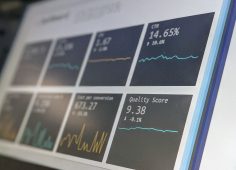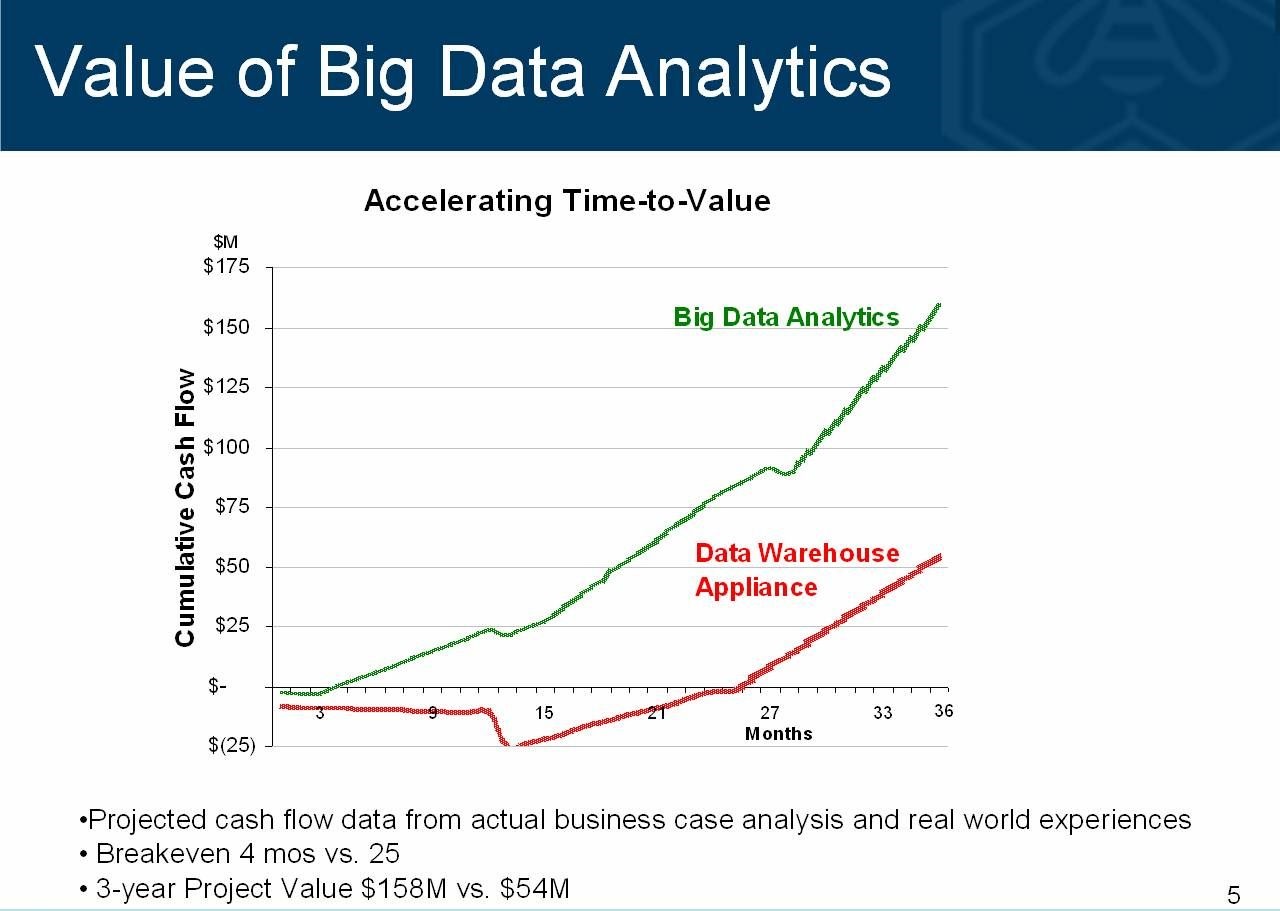Why Big Data Analytics?
In today’s data-driven world, the volume, variety, and velocity of data are increasing at an unprecedented rate. Organizations across industries are realizing the potential of harnessing this massive amount of data to gain valuable insights and make informed decisions. This is where big data analytics comes into play.
Big data analytics refers to the process of examining and analyzing large and complex datasets to uncover hidden patterns, correlations, and trends. It enables businesses to turn data into actionable insights, leading to improved operational efficiency, better decision-making, and competitive advantage.
There are several reasons why big data analytics has become essential for organizations:
- Identification of business opportunities: Big data analytics allows businesses to identify new market trends, customer preferences, and emerging opportunities. By analyzing vast amounts of data, companies can gain a deeper understanding of their target audience and tailor their products or services accordingly.
- Enhanced customer experience: With big data analytics, organizations can analyze customer behavior, preferences, and feedback in real-time. This enables businesses to personalize their offerings, provide targeted recommendations, and deliver an exceptional customer experience.
- Improved operational efficiency: By analyzing operational data, organizations can identify inefficiencies and bottlenecks in their processes. This enables them to streamline operations, optimize resource allocation, and reduce costs.
- Fraud detection and risk management: Big data analytics can help identify patterns and anomalies in data that may indicate fraudulent activities or potential risks. By leveraging advanced analytics techniques, businesses can proactively detect and mitigate risks.
- Data-driven decision-making: With big data analytics, organizations can make data-driven decisions backed by quantitative insights. This reduces reliance on intuition or gut feeling and ensures that decisions are based on evidence and analysis.
In summary, big data analytics has become crucial for organizations to gain a competitive edge in today’s data-driven landscape. By leveraging the power of big data, businesses can unlock valuable insights, drive innovation, and make informed decisions that impact their bottom line.
Understanding Big Data
In the era of digital transformation, the amount of data generated is growing exponentially. Understanding big data is crucial for organizations looking to leverage its potential. Big data refers to large and complex datasets that cannot be effectively managed and analyzed using traditional data processing techniques.
There are three key characteristics that define big data:
- Volume: Big data is characterized by its sheer volume. It encompasses massive amounts of structured and unstructured data generated from various sources such as social media, sensors, mobile devices, and transaction records. The volume of data is so vast that it requires specialized tools and technologies to store and process it.
- Variety: Big data is diverse and comes in different formats and types. It includes structured data, such as traditional databases and spreadsheets, as well as unstructured data like emails, videos, social media posts, and sensor readings. Managing and analyzing this varied data requires flexible data models and scalable infrastructure.
- Velocity: Big data is generated and updated at a high velocity. The speed at which data is collected, processed, and analyzed is crucial for timely decision-making. Real-time data streaming, for example, is essential for applications such as fraud detection or predicting stock market trends.
Understanding big data involves not only recognizing its characteristics but also grasping the potential value it holds. Big data analytics enables organizations to extract meaningful insights from this vast amount of information.
Traditional data analysis techniques fall short when it comes to big data. Advanced technologies like Hadoop, Apache Spark, and NoSQL databases are designed to handle big data’s volume, variety, and velocity. These technologies enable organizations to store, process, and analyze big data efficiently.
Moreover, understanding big data requires a shift in mindset. It involves moving from a focus on sample-based analysis to exploring entire datasets. Big data analytics allows businesses to discover patterns, correlations, and trends that were previously hidden. By analyzing large datasets, businesses can gain a more comprehensive understanding of their customers, operations, and market dynamics.
In summary, understanding big data goes beyond merely acknowledging its characteristics. It involves embracing advanced technologies and shifting towards a data-driven approach. By effectively managing and analyzing big data, organizations can unlock valuable insights and gain a competitive edge in the digital age.
Collecting and Storing Data
In the era of big data, collecting and storing data effectively is crucial for organizations seeking to harness its potential. The process of collecting and storing data involves capturing, organizing, and archiving the vast amount of information generated from various sources.
Here are some key considerations for collecting and storing data:
- Data Sources: Data can be collected from various sources such as customer interactions, social media platforms, website analytics, sensors, and internal databases. It’s important to identify the relevant data sources and ensure they are accurately captured for analysis.
- Data Quality: Ensuring data quality is paramount for meaningful analysis. Data must be accurate, complete, consistent, and free of errors or duplications. Implementing data validation and cleansing processes can help maintain data integrity.
- Data Integration: Organizations often deal with multiple data sources and formats. Integrating data from different sources into a unified format allows for comprehensive analysis. This can be achieved through data integration techniques like Extract, Transform, Load (ETL) processes.
- Data Storage: Storing data in a scalable and efficient manner is essential. There are various options available, such as traditional relational databases, distributed file systems like Hadoop Distributed File System (HDFS), or cloud-based storage solutions. The choice depends on the specific needs and architecture of the organization.
- Data Security: As data contains sensitive information, it is crucial to implement robust security measures. This includes data encryption, access controls, regular backups, and disaster recovery plans. Compliance with data protection regulations, such as GDPR or HIPAA, should also be ensured.
Organizations can leverage technologies like data lakes or data warehouses to enable efficient storage and retrieval of data. Data lakes store raw, unprocessed data in its original format, making it suitable for exploratory analysis. Data warehouses, on the other hand, store structured and organized data for more streamlined analytics.
Furthermore, adopting a data governance framework is essential to ensure data collection and storage adhere to organizational policies and regulatory requirements. This includes defining roles and responsibilities for data management, establishing data quality standards, and implementing data governance processes.
In summary, collecting and storing data effectively sets the foundation for successful big data analytics. By identifying relevant data sources, ensuring data quality, integrating data, choosing appropriate storage solutions, and implementing adequate security measures, organizations can unlock the full potential of their data assets.
Data Preprocessing
Data preprocessing is a crucial step in the big data analytics pipeline. It involves cleaning, transforming, and organizing raw data to make it suitable for analysis. Preprocessing addresses issues such as missing values, outliers, inconsistent formats, and irrelevant features in the dataset.
Here are the key steps involved in data preprocessing:
- Data Cleaning: This step involves identifying and handling missing values in the dataset. Missing data can negatively impact the analysis and lead to biased insights. Techniques such as imputation (replacing missing values with estimated values) or deletion (removing instances with missing values) can be used to address this issue.
- Data Transformation: Data transformation focuses on converting the data into a suitable format for analysis. This includes scaling numerical data, encoding categorical variables, and normalizing data. Scaling ensures that features with different measurement units have a comparable magnitude, while encoding encodes categorical variables with numerical labels for analysis.
- Feature Selection: In some cases, the dataset may contain irrelevant or redundant features that do not contribute significantly to the analysis. Feature selection techniques, such as correlation analysis or feature importance algorithms, can help identify and remove such features, reducing the dimensionality of the data and improving the efficiency of the analysis.
- Handling Outliers: Outliers are data points that deviate significantly from the normal distribution of the dataset. They can affect the statistical analysis and lead to misleading results. Outliers can be handled by either removing them or applying statistical techniques such as winsorization or transforming the data to make it more robust to outliers.
- Data Integration: In situations where data is sourced from multiple sources, data integration is required to combine and consolidate the datasets into a unified format. This involves resolving inconsistencies, aligning data structures, and standardizing variables to ensure compatibility.
Data preprocessing is often an iterative process. It requires an understanding of the data, domain knowledge, and the specific goals of the analysis. It is important to evaluate the impact of each preprocessing step on the final results and make adjustments as necessary.
There are various tools and platforms available to facilitate data preprocessing tasks. These include Python libraries like Pandas and NumPy, as well as commercial tools that provide graphical user interfaces for data cleaning and transformation.
Proper data preprocessing sets the stage for accurate and reliable analysis. By cleaning, transforming, and organizing the data, organizations can ensure the quality and integrity of the dataset, leading to meaningful insights and robust decision-making.
Choosing the Right Analytics Tools
When it comes to big data analytics, choosing the right analytics tools is essential for effective and efficient data analysis. There are a plethora of tools available, each offering different features, capabilities, and compatibility with specific data types and analysis techniques.
Here are some key factors to consider when selecting analytics tools:
- Data Compatibility: It’s essential to choose tools that are compatible with your data sources and formats. Some tools may excel at handling structured data from databases, while others may be better suited for analyzing unstructured data from social media platforms or text documents. Ensure that the tools you choose align with the types of data you are working with.
- Scalability: As big data involves working with large and complex datasets, scalability is crucial. The tools should have the capability to handle the volume, velocity, and variety of data that your organization deals with. It’s important to consider the tool’s performance and ability to scale with increasing data volumes.
- Analytics Capabilities: Different analytics tools offer various capabilities, such as descriptive analytics, diagnostic analytics, predictive analytics, or prescriptive analytics. Assess your organization’s analytical needs and choose tools that provide the necessary functionalities to achieve your goals.
- User-Friendliness: User-friendliness is a crucial factor to consider, especially for organizations with non-technical users. The tools should have intuitive interfaces, easy-to-understand workflows, and comprehensive documentation or support resources. Training and support options should also be considered to ensure users can effectively utilize the tools.
- Integration and Compatibility: Consider the compatibility of the tools with existing systems and technologies in your organization’s IT infrastructure. Look for tools that can seamlessly integrate with other applications or databases. Compatibility with popular programming languages and frameworks can also be a consideration if you require customization or advanced analysis techniques.
- Cost and Budget: Analytic tools come with varying cost structures, including one-time licenses, subscriptions, or pay-as-you-go models. Evaluate your organization’s budget and consider the long-term costs, including maintenance, support, and scalability. It’s important to strike a balance between the capabilities of the tools and their cost.
Popular big data analytics tools include open-source platforms like Apache Hadoop, Apache Spark, and R programming language. Commercial tools like Tableau, IBM Watson Analytics, and SAS provide user-friendly interfaces with advanced analytics capabilities. Cloud-based platforms, such as Amazon Web Services (AWS) or Google Cloud Platform (GCP), offer scalable and flexible analytics solutions.
Ultimately, the choice of analytics tools depends on your organization’s specific requirements and goals. It’s crucial to evaluate multiple options, consider the factors mentioned above, and even conduct pilot tests or proofs of concept to ensure that the chosen tools align with your organization’s big data analytics strategy.
Exploratory Data Analysis
Exploratory Data Analysis (EDA) is a crucial step in the big data analytics process. It involves examining and analyzing the data to gain an initial understanding of its characteristics, uncover patterns, and identify relationships among variables. EDA helps in formulating hypotheses, identifying potential outliers, and determining the most suitable analytical techniques for further analysis.
Here are the key steps involved in Exploratory Data Analysis:
- Data Visualization: Visualizing data through graphs, charts, or plots is an effective way to gain insights and understand the distribution, trends, and patterns within the data. It helps in identifying outliers, clusters, and potential relationships between variables. Common visualization techniques include scatter plots, histograms, bar charts, and heatmaps.
- Descriptive Statistics: Descriptive statistics provide summary measures of the data, giving a snapshot of its central tendency, dispersion, and shape. Measures such as mean, median, standard deviation, and skewness provide insights into the numerical distribution of variables. Descriptive statistics help identify any significant deviations from expected patterns.
- Correlation Analysis: Correlation analysis measures the relationship between two or more variables, quantifying the strength and direction of their association. It helps in understanding how changes in one variable affect another. Correlation matrices or scatter plots are commonly used to visualize correlations.
- Dimensionality Reduction: In cases where the dataset has numerous variables, dimensionality reduction techniques like Principal Component Analysis (PCA) can be employed to condense the data into a smaller set of meaningful components. This reduces complexity and aids in understanding the underlying structure of the data.
- Feature Engineering: Feature engineering involves creating new features by transforming or combining existing ones. This process can enhance the predictive power of models by capturing additional patterns or relationships in the data. Techniques like binning, scaling, or creating interaction terms can be used to engineer valuable features.
- Identifying Outliers and Anomalies: Outliers or anomalies can significantly impact analysis and model performance. EDA helps in identifying these outliers by visualizing data distributions, detecting data points with extreme values, or using statistical methods such as z-scores or modified z-scores.
EDA is an iterative process that involves repeatedly exploring the data, visualizing it from different perspectives, and adjusting the analysis based on the insights gained. It helps analysts develop a deeper understanding of the data and guide subsequent analysis steps.
Tools like Python libraries (Pandas, Matplotlib, Seaborn), R programming language, or visualization tools like Tableau or Power BI, provide a range of capabilities to perform EDA. These tools enable analysts to visualize and manipulate data efficiently, allowing for a comprehensive exploration of complex datasets.
In summary, Exploratory Data Analysis is a crucial step in big data analytics that helps uncover insights, detect patterns, identify outliers, and guide the subsequent analysis process. By leveraging visualization techniques, descriptive statistics, correlation analysis, and feature engineering, organizations can gain a solid foundation for further analysis and decision-making.
Building Predictive Models
Building predictive models is a key aspect of big data analytics, enabling organizations to make accurate predictions and forecast future trends based on historical data. Predictive models utilize machine learning algorithms and statistical techniques to identify patterns, relationships, and dependencies in the data, allowing for the creation of reliable predictive models.
Here are the key steps involved in building predictive models:
- Data Preparation: Data preparation is crucial before building predictive models. This involves selecting relevant features, handling missing values, encoding categorical variables, and normalizing or scaling the data appropriately. It also involves dividing the data into training and testing datasets.
- Feature Selection: Feature selection aims to identify the most relevant variables that contribute significantly to the predictive model. Techniques like correlation analysis, stepwise regression, or feature importance can help in selecting the most informative features while reducing dimensionality.
- Algorithm Selection: Choosing the right algorithms depends on the nature of the problem and the available data. Common algorithms used for predictive modeling include linear regression, decision trees, random forests, support vector machines, and neural networks.
- Model Training: In this step, the selected algorithm is applied to the training dataset to build the predictive model. The model learns patterns and relationships in the data to make predictions. The choice of model parameters, such as learning rate or maximum tree depth, can impact model performance.
- Model Evaluation: Evaluating the predictive model is crucial to ensure its accuracy and performance. Metrics such as accuracy, precision, recall, and F1 score are often used to measure model performance. Cross-validation techniques and test datasets are used to validate the model’s predictive capabilities.
- Model Deployment: Once the model is trained and evaluated, it can be deployed in a production environment for making predictions on new and unseen data. This may involve integrating the model into existing systems, creating APIs for real-time predictions, or using the model for batch predictions.
Building predictive models often requires knowledge and expertise in machine learning algorithms and statistical techniques. The choice of algorithm depends on the nature of the problem and the available data. It’s crucial to iterate and experiment with different algorithms and model parameters to optimize predictive performance.
Tools and libraries like scikit-learn, TensorFlow, PyTorch, or R programming language provide a wide range of capabilities for building predictive models. These tools offer pre-implemented algorithms and functions to streamline the modeling process and provide insights into model accuracy and performance.
In summary, building predictive models is an important step in big data analytics. By following a systematic approach of data preparation, feature selection, algorithm selection, model training, evaluation, and deployment, organizations can develop reliable models to make accurate predictions and generate valuable insights from their big data.
Deploying Big Data Analytics Solutions
Deploying big data analytics solutions involves implementing the insights and models generated from the data analysis process into application systems or business operations. It enables organizations to derive value from their data and make data-driven decisions. Successful deployment ensures that the insights and predictions generated through big data analytics are utilized effectively and integrated into existing workflows and processes.
Here are the key steps involved in deploying big data analytics solutions:
- Infrastructure Setup: To deploy big data analytics solutions, organizations need to establish a robust and scalable infrastructure that can handle the volume, variety, and velocity of big data. This may involve setting up on-premises data centers or adopting cloud-based solutions like Amazon Web Services (AWS) or Microsoft Azure.
- Integration with Existing Systems: Big data analytics solutions should seamlessly integrate with existing IT systems, applications, and workflows. This involves ensuring compatibility with data storage systems, databases, APIs, and data processing pipelines. Integration enables the flow of data between different systems and allows for real-time decision-making.
- Automation and Real-Time Processing: Deploying big data analytics solutions often involves automating data processing and analysis tasks. Real-time processing enables the continuous ingestion, processing, and analysis of data, allowing for timely and actionable insights. Automation reduces manual efforts and ensures speed and accuracy in data processing.
- Model Deployment and Monitoring: Big data analytics solutions often involve deploying predictive models developed during the analysis phase. Model deployment includes integrating the models into the production environment and setting up mechanisms for model monitoring and performance evaluation. Regular monitoring ensures the models remain accurate and up-to-date.
- Data Governance and Security: Deploying big data analytics solutions requires robust data governance practices to ensure data security, privacy, and compliance with regulations. This involves establishing access controls, data encryption, audit trails, and policies to govern how data is collected, stored, utilized, and shared within the organization.
- User Adoption and Training: Successful deployment of big data analytics solutions relies on user adoption and engagement. It is essential to provide training and resources to users to ensure they understand the benefits and capabilities of the solutions. User-friendly interfaces and dashboards enhance usability and promote active participation in leveraging the insights generated.
It is important to continuously monitor and evaluate the deployed solutions to ensure they meet the desired goals and objectives. Feedback loops and iterative improvements help refine the solutions and optimize their performance over time.
In summary, deploying big data analytics solutions involves establishing a scalable infrastructure, integrating with existing systems, automating processes, deploying predictive models, ensuring data governance, and promoting user adoption. Successful deployment enables organizations to effectively leverage insights from big data to drive decision-making and achieve their business objectives.
Securing Data and Ensuring Privacy
Securing data and ensuring privacy are critical aspects of big data analytics. With the increasing volume and sensitivity of data being processed, organizations need to implement robust security measures to protect data from unauthorized access, breaches, and misuse.
Here are key considerations for securing data and ensuring privacy in big data analytics:
- Data Classification: Data classification involves categorizing data based on its sensitivity and value. This enables organizations to allocate appropriate security controls and determine access privileges. Classifying data assists in identifying the level of protection required for different data types.
- Data Encryption: Encryption transforms data into an unreadable format, ensuring that even if it is accessed unauthorizedly, it remains unintelligible. Encryption techniques, such as symmetric or asymmetric encryption, protect data during transmission and storage. Employing encryption helps safeguard sensitive information from unauthorized access.
- Access Controls: Implementing access controls ensures that only authorized individuals can access and modify data. User authentication, multi-factor authentication, and role-based access control (RBAC) are examples of mechanisms that restrict data access to authorized personnel. Access controls minimize the risk of unauthorized data exposure or tampering.
- Data Masking and Anonymization: Data masking and anonymization techniques help protect privacy by replacing sensitive data with artificial or modified values while preserving the data’s utility for analysis. This prevents the disclosure of personally identifiable information (PII) while allowing data analysis and processing to take place.
- Data Governance and Compliance: Establishing a robust data governance framework ensures that data handling practices adhere to industry regulations and organizational policies. Compliance with regulations, such as the General Data Protection Regulation (GDPR) or the Health Insurance Portability and Accountability Act (HIPAA), helps ensure privacy protection and safeguards against potential legal issues.
- Regular Monitoring and Auditing: Continuous monitoring and auditing of data systems and processes help detect potential security breaches or anomalies. Monitoring tools can identify unauthorized access attempts, unusual data access patterns, or suspicious activities. Regular audits provide insights into compliance, security vulnerabilities, and areas for improvement.
Organizations should adopt a comprehensive approach to data security and privacy, involving both technical and organizational measures. This includes training employees on security practices, implementing incident response plans, regularly updating security protocols, and performing vulnerability assessments.
Furthermore, organizations should remain vigilant against emerging threats and evolving data security risks. Staying up-to-date with the latest security practices, technologies, and industry standards is crucial to protect data in the face of changing landscapes.
In summary, securing data and ensuring privacy is vital in big data analytics. By classifying data, implementing encryption and access controls, utilizing data masking and anonymization techniques, establishing data governance practices, and regularly monitoring and auditing systems, organizations can protect sensitive data and maintain privacy while deriving insights from big data analytics.
Interpreting and Presenting Results
Interpreting and presenting the results of big data analytics is a crucial step in deriving meaningful insights and guiding decision-making processes. It involves analyzing the output of data analysis techniques and effectively communicating the findings to stakeholders in a clear and concise manner.
Here are key considerations for interpreting and presenting results in big data analytics:
- Data Contextualization: Results should be interpreted within the context of the business problem or objective. Understanding the underlying domain and industry-specific nuances helps frame the findings in a meaningful way. Stakeholders need to grasp how the results relate to the broader business context.
- Data Visualization: Effective data visualization techniques play a crucial role in presenting results. By utilizing charts, graphs, and other visual aids, complex data can be presented in a concise and understandable format. Visualizations should be tailored to the target audience and facilitate the identification of patterns, trends, and insights.
- Clear and concise narrative: Results should be presented in a clear and concise manner, with a focus on the most relevant and impactful insights. The narrative should provide context, highlight the main findings, and draw attention to actionable recommendations. Avoid using technical jargon that may confuse non-technical stakeholders.
- Explaining Uncertainty: It is crucial to communicate any uncertainties or limitations in the analysis. Big data analysis often involves dealing with incomplete or imperfect data, and understanding the potential impact of these limitations is essential. Explaining the level of confidence in the results helps stakeholders make informed decisions.
- Engage Stakeholders: Engaging stakeholders throughout the interpretation and presentation process fosters collaboration and buy-in. Actively involving stakeholders in discussions, inviting questions, and facilitating open dialogue enhances their understanding and acceptance of the results. Presentations should be tailored to the specific needs and knowledge level of the audience.
- Provide Recommendations: Alongside presenting the results, it is important to offer actionable recommendations based on the insights gained. Recommendations should be practical, feasible, and aligned with the organization’s goals and objectives. Clear and concrete steps help stakeholders understand how to implement the insights to drive positive outcomes.
Choosing the right tools and technologies for presenting results is also important. Data visualization tools like Tableau, Power BI, or open-source libraries like D3.js can help create interactive and engaging visualizations. Presentation software like PowerPoint or Google Slides can be used to deliver concise and impactful presentations.
Lastly, it’s essential to seek feedback from stakeholders and continuously refine the interpretation and presentation process. By actively incorporating feedback, organizations can improve the effectiveness of results communication and enhance decision-making based on data insights.
In summary, interpreting and presenting results in big data analytics requires contextualizing the findings, utilizing effective data visualization techniques, providing a clear narrative, addressing uncertainties, engaging stakeholders, and offering actionable recommendations. Effectively communicating results drives understanding and facilitates data-driven decision-making within organizations.
Challenges in Big Data Analytics
Big data analytics offers numerous benefits, but it is not without its challenges. From data collection to analysis and implementation, organizations face several obstacles as they leverage big data to gain valuable insights. Understanding these challenges is crucial for successful implementation and utilization of big data analytics.
Here are some key challenges in big data analytics:
- Data Quality: Ensuring data quality is a significant challenge in big data analytics. Large volumes of data from various sources often contain errors, inconsistencies, and missing values. Incomplete or inaccurate data can lead to biased insights and unreliable predictions. Implementing robust data cleansing and validation processes is vital to address this challenge.
- Data Integration: Big data analytics often involves working with data from multiple sources, which may have different formats, structures, or levels of granularity. Integrating and harmonizing disparate datasets poses challenges in aligning data models, resolving inconsistencies, and ensuring compatibility. Establishing efficient data integration processes is essential for a comprehensive analysis.
- Scalability: The sheer volume of data in big data analytics can strain computing infrastructure and impact analysis performance. Processing and analyzing large datasets require scalable computing resources, storage systems, and algorithms. Ensuring that the infrastructure can handle the increasing data volumes is crucial for efficient analysis and timely insights.
- Data Privacy and Security: With the growing concerns around data privacy and security, organizations face the challenge of safeguarding sensitive information. Big data often includes personally identifiable information (PII) or commercially valuable data, making it a target for unauthorized access or breaches. Implementing robust data governance practices, encryption techniques, and access controls are essential for maintaining data privacy and security.
- Advanced Analytics Skills: Extracting insights from big data requires a skilled workforce with expertise in advanced analytics techniques, such as machine learning, statistical analysis, and data mining. The shortage of professionals who possess these skills poses a challenge for organizations seeking to leverage big data analytics. Investing in training and upskilling employees is crucial to overcome this challenge.
- Regulatory Compliance: Organizations must navigate complex regulatory landscapes, such as GDPR or HIPAA, when handling big data. Compliance with these regulations requires understanding legal obligations regarding data protection, data handling practices, consent requirements, and ensuring compliance throughout the analytics process. Maintaining compliance can be challenging, considering the dynamic nature of big data analytics.
Addressing these challenges requires careful planning, investment in technology and talent, and adoption of best practices. Organizations must prioritize data quality, ensure data privacy and security, implement scalable infrastructure, promote advanced analytics skills development, and achieve regulatory compliance.
In summary, big data analytics presents several challenges, including data quality, data integration, scalability, data privacy and security, skills shortage, and regulatory compliance. By identifying and addressing these challenges, organizations can maximize the value derived from big data analytics and overcome obstacles to effective data-driven decision-making.
Best Practices for Big Data Analytics
Big data analytics can provide valuable insights and drive data-driven decision-making processes. To ensure successful implementation and maximize the benefits of big data analytics, organizations should adhere to best practices. These practices help optimize the use of data, improve analysis accuracy, and foster a culture of data-driven decision-making.
Here are some key best practices for big data analytics:
- Define Clear Objectives: Clearly define the objectives of the analytics initiative and align them with the organization’s overall goals. Identify the specific business problems or opportunities that analytics will address and outline the desired outcomes. This enables focused analysis and ensures that results align with strategic objectives.
- Quality Data Collection: Collecting high-quality data is crucial for meaningful analysis. Ensure data is collected from reliable sources, free from errors and inconsistencies. Implement data validation and cleansing processes to maintain data accuracy and integrity. Quality data sets the foundation for accurate and reliable insights.
- Scalable Infrastructure: Establish a scalable infrastructure that can handle the volume and velocity of big data. Use technologies like distributed file systems, cloud computing platforms, and scalable database architectures. Ensure the infrastructure can accommodate future growth and provide timely access to data for analysis.
- Data Governance & Data Security: Implement robust data governance practices to ensure data security, privacy, and compliance. Establish data access controls, encryption mechanisms, and regular monitoring. Adhere to relevant regulations and industry standards to safeguard data privacy and security.
- Advanced Analytics Techniques: Leverage advanced analytics techniques such as machine learning, predictive modeling, and natural language processing to extract valuable insights from data. Explore different algorithms and methodologies to identify the most suitable techniques for the specific analysis objectives. Continuously update and refine models to improve accuracy and performance.
- Effective Data Visualization: Use effective data visualization techniques to communicate insights clearly and efficiently. Visualizations should be tailored to the target audience, highlighting key patterns and trends in the data. Use interactive visualizations to enable user exploration and understanding of the data.
- Continuous Monitoring and Evaluation: Establish processes for continuous monitoring and evaluation of the analytics initiatives. Regularly assess the accuracy, performance, and impact of the analytics models and insights generated. Incorporate feedback from stakeholders and iterate on the analysis approach to improve results over time.
- Cross-functional Collaboration: Foster cross-functional collaboration by involving stakeholders from different departments. Encourage collaboration between data analysts, domain experts, and business leaders to ensure analysis is aligned with business objectives and decision-making needs. Collaboration helps in deriving meaningful insights and ensures alignment between analytics and business goals.
- Continuous Learning and Skill Development: Invest in continuous learning and skill development to keep up with advancements in big data analytics. Encourage employees to enhance their skills in areas such as data analysis, statistics, programming languages, and machine learning. Stay updated with industry best practices and emerging technologies to drive innovation and improve analysis capabilities.
Following these best practices helps organizations maximize the value derived from big data analytics. By defining clear objectives, ensuring data quality, implementing scalable infrastructure, prioritizing data governance and security, utilizing advanced analytics techniques, employing effective data visualization, continuously monitoring and evaluating initiatives, fostering cross-functional collaboration, and investing in skill development, organizations can unlock the full potential of their big data.
In summary, adhering to best practices in big data analytics drives effective analysis, accurate insights, and informed decision-making. By adopting these practices, organizations can optimize the utilization of big data and gain a competitive advantage in today’s data-driven business landscape.
Conclusion
Big data analytics has emerged as a critical capability for organizations seeking to harness the power of data to gain valuable insights and make informed decisions. By analyzing large and complex datasets, businesses can uncover hidden patterns, trends, and correlations, leading to improved operational efficiency, enhanced customer experiences, and a competitive edge in the market.
Throughout this article, we have explored various aspects of big data analytics, starting from understanding big data and collecting/storing data to data preprocessing, choosing the right analytics tools, and building predictive models. We discussed the challenges organizations may encounter, such as data quality, data integration, scalability, data privacy, skills shortage, and regulatory compliance. We also highlighted best practices for successful big data analytics implementation, including clear objective definition, quality data collection, scalable infrastructure, data governance and security, advanced analytics techniques, effective data visualization, continuous monitoring and evaluation, cross-functional collaboration, and continuous learning.
In today’s data-driven world, organizations must seize the opportunities offered by big data analytics while addressing the associated challenges. By adopting best practices and leveraging the right tools and technologies, organizations can turn their data into a valuable asset and drive innovation, efficiency, and competitiveness.
As the landscape of big data continues to evolve, staying informed about emerging trends, advancements in technology, and industry practices becomes even more vital. By embracing a data-driven culture and continually improving skills and knowledge in big data analytics, organizations can unlock the full potential of their data assets and stay ahead in the digital era.

























